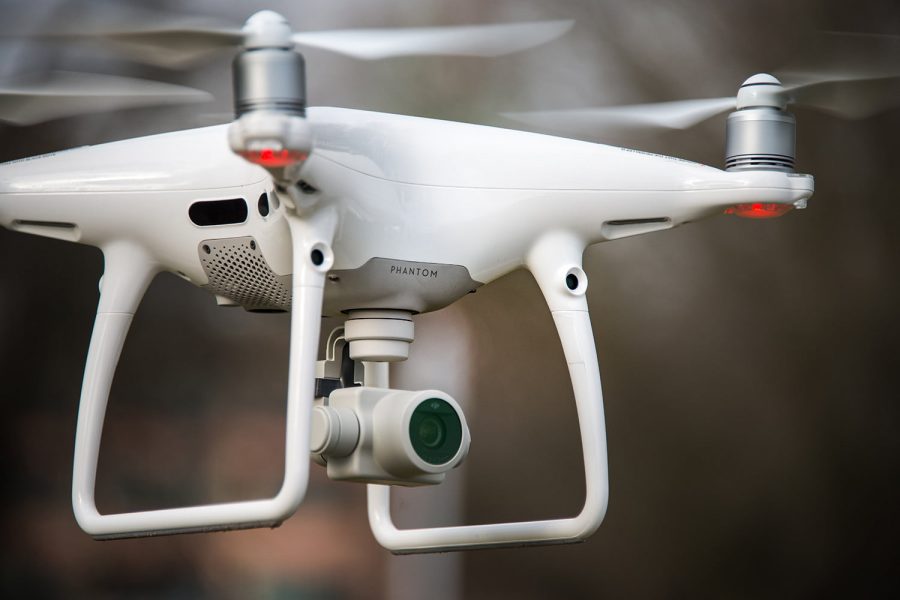Holiday Gift Review (Phantom 4 Drone)
Review of the most intelligent consumer drone on the market
December 1, 2017
With the recent ability to provide a new perspective on objects and events, many professionals and consumers are jumping on the opportunity of flying drones. It’s easy to get lost in the vast number of consumer drones. But one company stands above all the others, and that is DJI. Today we’ll focus on one specific drone: the DJI Phantom 4. Coming in at a cool $1,800, this marks the top end of what could be considered DJI’s consumer line, with the next level up being the $3,000 pro-level Inspire 2.
The drone itself has some real improvements, when compared to its earlier models. The 1-inch image sensor on its camera can shoot 20-megapixel stills, and it currently holds the trophy for some of the most impressive quality on the market. With the ability to shoot 4K video at 60fps (frames per second) or UHD (1320p) at 120fps, the drone’s camera gives you the clean, crisp shot as if you were viewing it in first person.
I spent some time exploring the autonomous “smart-modes”, which let you send the drone through different automated flight paths. Orbit mode lets you set a center point and fly circles around it, with a variety of options for speed, distance, and altitude, and it worked extremely well. Tripod mode will net you an extremely stable shot, as if the camera were sitting on an aerial tripod. The modes I was most interested in were the active track modes where you tap a subject on the screen and the drone follows it. It did extremely well in flat, clear environments, but it gets confused easily by other objects, such as large rocks. The “profile follow” mode is designed to fly alongside you and it produces some great visuals, but if you hit the brakes too quickly it’ll fly right by you. At one point in this mode, it just stopped and followed me with the camera but refused to move, like a stubborn toddler.
The Phantom 4 has a 4.3 mile signal range, which is way further than I was willing to let it fly. It also has a 5,350 mAh battery giving it 25 minutes of flying time per charge (up from 18). It has indoor flight sensors that work at distances up to 100 feet away, giving you very stable hovering, even where there’s no GPS to tell it where to pin itself. It has 3 flight modes: Standard mode where it uses it’s dual GPS and GLONASS positioning systems in addition to all of its sensors, Attitude mode where it transfers all control manually to the pilot and shutting off all sensors, Sport mode where GPS and GLONASS is on but other sensors go blind allowing the power to be directly put into the motors. In sport mode the drone is able to bank a 45 degree tilt and hit 60mph.
I have flown various model drones one of the first drones I have ever flown was the Parrot AR 2.0 drone. The first of its kind back in 2013 with a 1080p (HD) front facing camera and a 720p downwards facing camera, it was the best thing on the market. The ability to control the drone from an app on your phone was a revolutionary idea. It lagged quite often and was not very responsive to the controls on the app. In fact there were a couple instances where the drone decided to spontaneously fly full speed in random directions, causing it to get stuck in a 70ft tree. Although only having the basic features of the more advanced drones this is a prime example of a starter drone, costing around $150.
Overall, the Phantom 4 is the best drone I’ve ever flown. It lacks the compact portability of the new DJI Spark or last year’s DJI Mavic Pro, but image quality on the Phantom 4 really blows those out of the water. I don’t recommend this as a starter drone due to its high cost and advanced maneuvering. There are plenty of ways it could continue to improve, but for now it’s the gold-standard.



